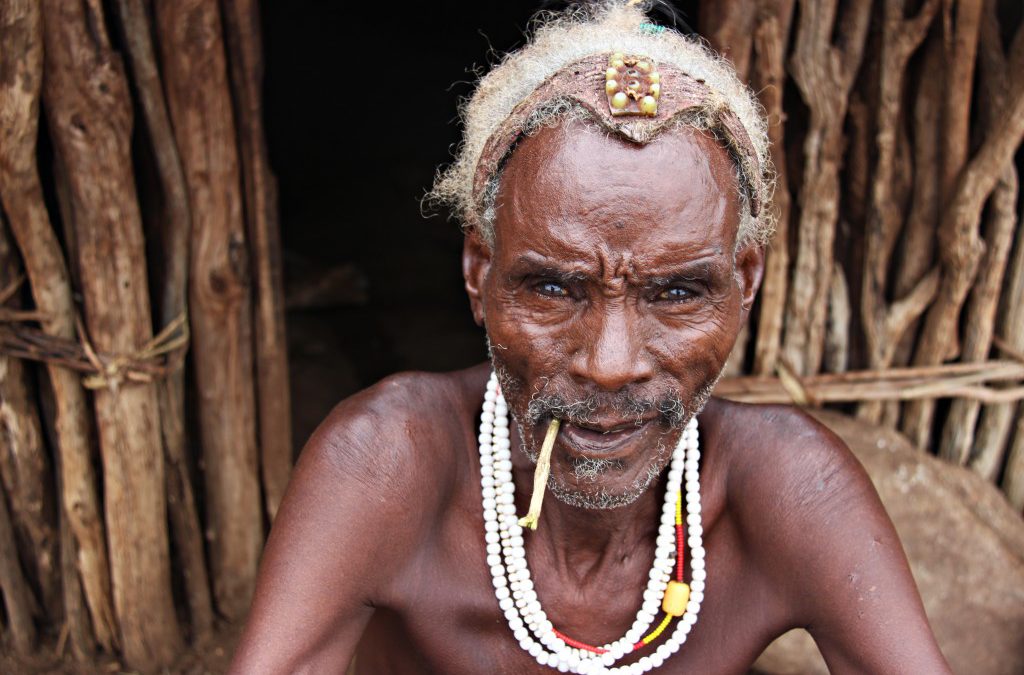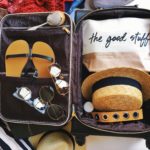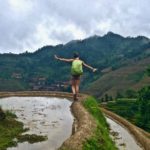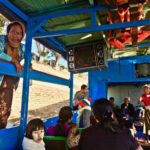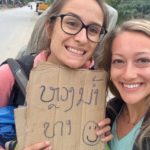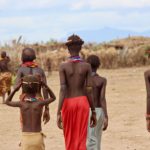I think a great travel photo captures not just the place, but the journey.
We’ve all read the hackneyed “tips for better travel photos” articles (yeah yeah, find the light, rule of thirds, etc.), so I’m going to just share three key things I do to document my own travels that you might not have heard elsewhere. I’ll also share a collection of favorite photos from my travels in order to walk you through a little bit about what makes them interesting and how to apply those lessons to your own photos.
A quick note on equipment: I’m currently traveling with a Canon Rebel T4i DSLR with 18-200mm and 50mm lenses, a Go Pro 4 on a long selfie stick, and an iPhone 7. I also use the Photos app on my Macbook to edit (but not over-edit) my photos.
However, I don’t think equipment makes as much of a difference as your commitment to taking lots of photos and taking them intentionally with attention to the detail of what you’re experiencing. I find photography actually helps me be more present in my travels by helping me pay closer attention to what little moments of life live in the spaces I visit, as well as the sources of what’s making an impression on me when I’m passing through.
Here’s my top 3 quick tips for you to help you best capture the essence of your next travel experience.
1. Separate out your photography and exploration time.
Because I’m normally traveling pretty slow, I always spend the first few days in a new place going out and taking photos like crazy while everything’s fresh and I have that obsessive, knawing urge to capture everything I see. Then, I do something most travelers don’t think to do: I leave my camera at home. I go out and explore everything without a barrier between me and my surroundings.
This method allows me to take better pictures because when I’m in “capturing mode” I can be fully intentional about it, not trying to stand and admire the marketplace and buy mangoes and take photos — I can just go through and focus on taking pictures. Then the next day I’ll come back and buy mangoes and chickens and stop for tea and chat with shopkeepers have no other objective except going to the market. For me, this is the best method of enjoying my travels and being intenseley present in every moment while still reserving time for documenting what I see.
I highly recommend paying attention to your first impressions of a place, because the things that immediately draw you in and fascinate you about a place are going to be the same things that draw the audience into your photo. On a related note, you also want to make sure you wait long enough. That’s why you’re giving yourself dedicated photography time. So if you’re in an amazing spot but you’re not getting any good photos, you can just wait longer. Sit down on a sidewalk with your camera in your lap and observe. Then use your lens to slowly capture the details, textures, and interactions in that little nook of the world.
2. Talk to the camera.
I was once hitchhiking through Laos with a French girl who had the habit of, whenever something exciting happened, pulling out her Go Pro+selfie stick and taking a video of herself talking to the camera. In 30 seconds, she’d explain what was going on and swing the camera around to capture the scene. What a brilliant idea! I went out and got a Go Pro in the next major city I came to and started doing the same. It showed me the value of 1) taking more video, 2) taking short clips that will hold your audience’s attention, and 3) narrating the story, which provides more vivid memories when you look back on those files years later.
On iPhone, I also love the “One Second Every Day” app and iMovie makes splicing short video clips together easy and practical.
3. Think about emotion and conditions.
Some photos get to be artistic, others get to be honest. These are the photos that aren’t in the perfect light with the best composition, but they capture the essence of what you were experiencing at that moment. The mud on your feet from hiking in the rain in Thailand, the blurry photo off the back of a motrocycle in India, the photo where you’re looking off in another direction but the expression on your faces captures the sheer delight — or frustration — of standing in the middle of Beijing night market. Some of my favorite travel photos convey pure emotion.
When I talk about emotion, I also mean searching for the emotion in a wide scene of human landscape, like a wild Ethiopian marketplace or a crowded temple ceremony in India. You can take a photo that shows what’s going on, but if it’s not sending the audience to a specific moment in that place, it’s not a great photo. Meet someone’s eyes, ask for their portrait, capture a story within a frame. Think about what you and the people around you are feeling and find a way to share that in two dimensions.
Of course, you also want to follow all those hackneyed tips I mocked at the start of this article: pay attention to lighting, use the rule of thirds for balance, check the foreground and background of photos to make sure a banana tree isn’t stiking out of your subject’s head, get close, ask permission for the best portraits, capture details and expressions, move around and try different angles, and, again, take LOTS of photos (and video).
Here are some examples from my own portfolio and what I think makes each of them great.
Timket festival action shot, Addis Ababa, Ethiopia – Can’t you just feel the emotion and excitement and the movement in this photo? One of the first things that struck me about Ethiopia was all the men and women wearing their light white cotton garments on church days and festivals. It’s a striking contrast to the brown and green landscape and stands out on their gorgeous mocha skin tones — and I think this photo captures that well.

On the road in southern Ethiopia – Another example of a shot that captures the emotions and conditions of not just a place, but a journey.

Getting a flat tire in central Mongolia – The conditions of road-tripping across the world’s largest and most remote landlocked country. This shot also speaks to the importance of trying different angles.

Running into a traffic jam in Ethiopia – I could make a ten-foot tall collage of all the photos I have where I just stuck my lens out the passenger window at whatever ridiculous thing was happening at the moment. These aren’t the most well-composed shots, but they’re honest and still very interesting.

Egyptian gas station – Don’t forget to capture what would be mundane at home, like a gas station, but wildly interesting in rural Egypt. Think of all the fascinating photographs you could take at a Japanese supermarket, a Russian laundrymat (with all the machines in Russian!), or a Burmese internet cafe.

Saying hello in Laos – A shot that captures why it’s so fun to get right in the middle of the action! Sometimes I lose all sense of good judgement and give kids my camera, too. They take some great photos!

Delivering bread in a Cairo marketplace – This is why it’s so valuable to separate out photography and deeply present exploration of a place. If I had been too focused on buying tea or fresh fruit, I might have missed this guy balancing his morning delivery on his head, or not had the time to take the 25 shots that resulted in this particular image. Got to love his shirt, too, right?

Women in the Dorze market, Ethiopia – I love photographing markets, but I always try to look for smaller moments or individuals to pull out of the chaos, shots that both capture the greater marketplace but also where someone seems to be telling me something. I think this photo does something else really well: it has a clear focal point. Your eyes should never search a good photo for what it’s supposed to be seeing. Good photos direct the audience right to the person or thing they are capturing.

Guyanese man on the streets of Georgetown – Now a word on portraits. For starters, I almost always ask for permission. Sometimes with my huge lens I can steal an “in the moment” shot of someone up close, but those photos aren’t half as good as when I stop, speak to the subject, and ask for them if it’s okay to photograph them. Audiences can also sense the distance between the subject and the photographer anyway, and closer is simply more vibrant, more interesting. (This shot could have been improved by checking the background for the woman behind him, or changing the angle.) Here’s a selection of portraits…

Hamer man in Omo Valley, Ethiopia – Watch the difference between this photo and the one below. Both are portraits, but see how getting closer and changing the angle makes a difference.

Hamer man in Omo Valley, Ethiopia – See his eyes?! See how the angle tells a story here? The angle above does, too, but it’s a different story. Playing with things like this in your photos creates variety and produces stronger shots.

Portrait of a shopkeeper in Swaziland – Her smile was just contagious, and telling her that made her more open to having it captured.

“Sadhu Baba” in Varanasi, India – Gave this guy the equivalent of 50 cents for a portrait. Sometimes the local people who are used to being photographed in oft-visited locations ask for money. If I want the shot, I’m happy to oblige.

Women in Tamil Nadu – Other times, locals in less-visited places would see my camera dangling from my neck and ask for their portrait. These women collapsed into fits of giggles during their “photo shoot.”

Curious woman in Dire Dawa, Ethiopia – Can’t you sense the distance? I’m standing pretty far away from this woman with my zoom on full, but the amazing part were her eyes still watching me from afar. Shots like this can be beautiful, but I don’t like them as much as when I get up close and interact with the subject first.

Boy in Merkato, Addis Ababa, Ethiopia – Patience again. Waiting for that moment of emotion on my surroundings, and I found it in this bored shopkeeper on a hot Ethiopian afternoon. This image captures both the conditions of the marketplace and the emotions of the people there, for better or worse.

Woman doing laundry in Merkato, Ethiopia – Not a perfectly composed shot, but you can feel the action and emotion here, a sharp contrast to the photo above.
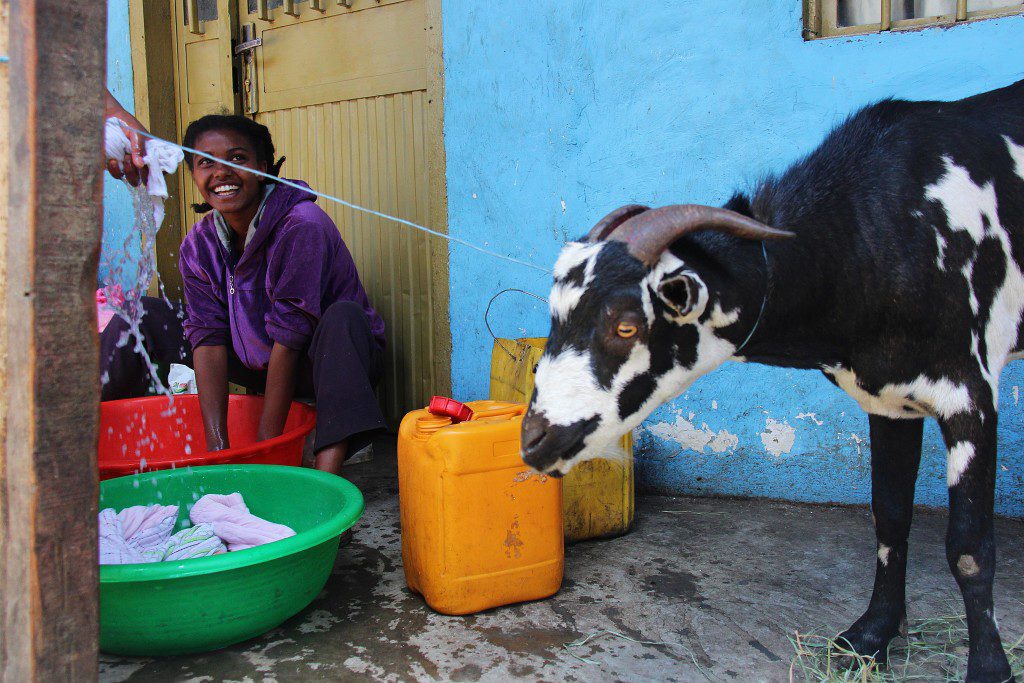
Colors in Zanzibar – The colors and expressions of these three children in Stone Town, Zanzibar, Tanzania, captured my attention immediately. Remember first impressions? The colors of Zanzibar struck me immediately and will strike the audience of this photo, as well.


